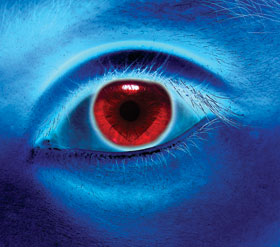

A research team at the University of the Free State’s Department of Computer Science and Informatics has developed technology aimed at making eye tracking applications more affordable for markets in developing countries.
Led by the head of the department, Professor Pieter Blignaut, the five-person team has developed a high quality eye tracker at a fraction of the cost for which it can be imported. Applications include the ability to ascertain the usability of a website, analyse the effectiveness of marketing material, study shopper behaviour and ‘gaze patterns’ as well as allow access to computers for those with complex physical disabilities.
Blignaut proudly states that this is the first development of its kind on the African continent, and has already enjoyed recognition as the runner-up in the THRIP category for Advanced Hi-Tech at last year’s awards ceremony of the Department of Trade and Industry.
“The biggest advantages that our product has over the international vendors are the quality/price ratio and the fact that we are able to provide training and support locally,” he explains. “The knowledge that we have gained through years of research enables us to provide a product that compares very favourably to that of international vendors with regard to data quality, at a fraction of the price.
“Our slogan – ‘If we can see what you see, we can think what you think’ – conveys the idea that analysis of gaze behaviour is instrumental to understanding the cognitive thought processes of a person using a website, looking at marketing material, driving a vehicle, watching television, etc.”
Along with the manufacturing and distribution of hardware equipment, the researchers have also developed specialised application software for potential users such as graphical designers, marketing agencies, usability analysts, cognitive psychologists, language specialists, ophthalmologists, radiographers, occupational and speech therapists, disabled persons, fleet owners and more. According to Blignaut, it is this software that is the really expensive part when buying imported eye tracking products.
Future research directions for this project include a high-speed model that can be used for reading research or other studies where rapid sampling is needed; a desktop model which will enable people without use of their hands to control a wheelchair through eye gaze and interact with a computer; and a glasses model that will enable gaze analysis of people in their natural surroundings, for example while driving a vehicle.
For more information contact Professor Pieter Blignaut, [email protected]

© Technews Publishing (Pty) Ltd | All Rights Reserved